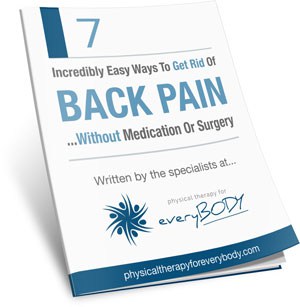
Viewpoint from the Journal of Orthopedic and Sports Physical Therapy
The “Viewpoint” section in the November 2016 JOSPT written by O’Sullivan, et al, offers an overview of the current research on treatment for low back pain. The authors begin by pointing out that “exponential increases in magnetic resonance imaging (MRI) scanning to identify these damaged structures have led to escalating rates of spinal fusion and disc replacements”. Surgery, along with spinal injections and pharmacological management, have limited long-term efficacy and carry significant risks.
The Physical Therapy profession has come up with a wide variety of manual techniques, taping, and exercise to help offer pain reduction and increased function to patients dealing with low back pain. The manual techniques are utilized to correct positional faults, decrease tone and guarding of the muscles, or improve flexibility. These have had good short term effects but there is limited research on the long term effects. Taping, dry needling, and electrotherapy are also shown to have short term effects. Exercise has long been touted as the best long term cure for low back pain but research does not support WHICH form of exercise works for low back pain.
So, how does a patient choose between this confusing list of options? There is “growing evidence that low back pain is a multidimensional disorder” which demonstrates the “need for a multidimensional clinic-reasoning approach to patient examination and management in order to identify the various and relevant underlying drivers of pain and disability for each individual”. Or, to put it more plainly, the evidence shows us that each person is unique. The causes of their low back pain and how it affects each individual is unique to that person. Each person has a desired level of activity to maintain or achieve which needs to drive decisions made about their care. Some people struggle with fear and anxiety that they will never have the life they want due to their pain. This needs to be addressed in some form during treatment. Patients need to be empowered with tools to utilize in their management of low back pain. These tools may include exercises, use of pain relievers, self-massage techniques, ergonomic changes, and modifying movement patterns. Support is required to grade an appropriate return to activity level for each person.
What is all comes down to is this – every BODY is different, unique, and special. Every BODY needs to be treated based on their history and on their future. Every BODY needs personalized care to make the most out of this life. Because every BODY CAN!




